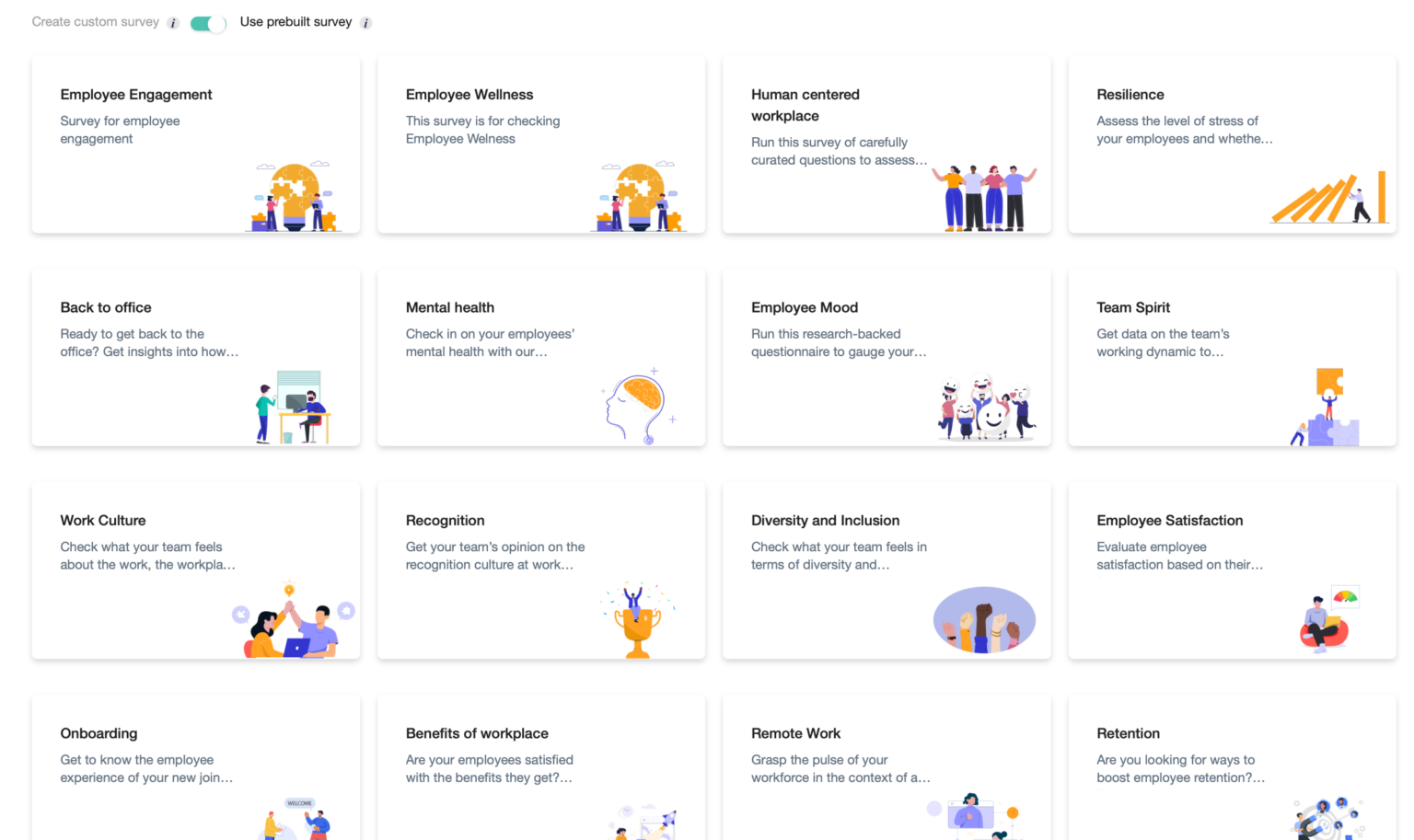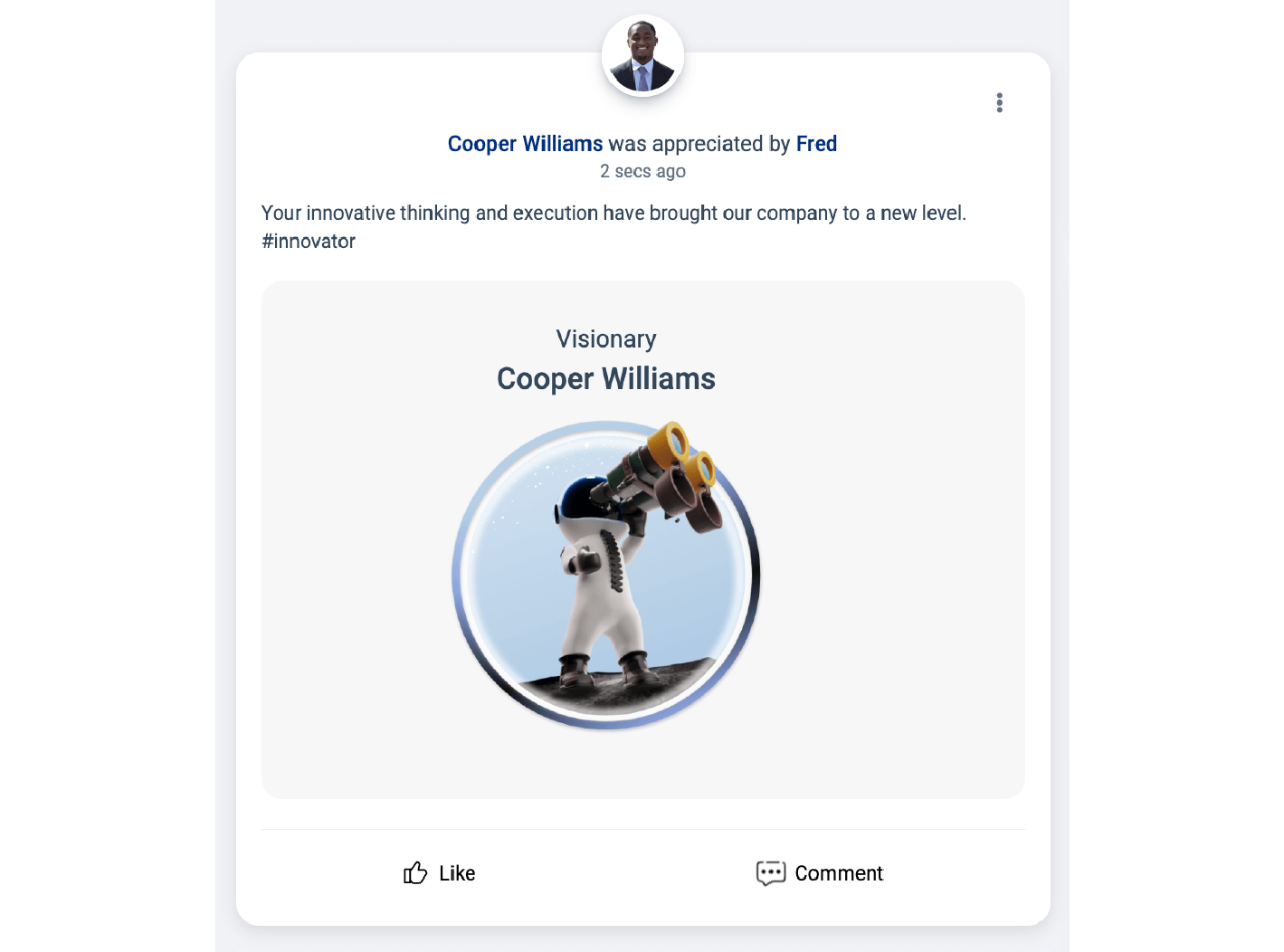10 Practical Ways to Improve Employee Engagement in Healthcare
Employee engagement in the healthcare industry has become a top priority for healthcare organizations seeking to improve patient satisfaction, staff retention, and quality of care.
Yet, the healthcare industry struggles with employee engagement more than many other sectors, facing high turnover rates. The costs of disengaged healthcare employees are clear, but the solutions remain ambiguous.
In this blog, we are exploring the ways to increase employee engagement and their benefits in the healthcare industry. Let’s dive in.
Key Insights
- Understanding The Meaning Of Employee Engagement In Healthcare Industry
- How Do Hospitals Increase Employee Engagement?
- Benefits Of Improved Employee Engagement In Healthcare Industry
- Glimpse On The Important Statistics Of Employee Engagement In Healthcare Industry
What Is Employee Engagement In Healthcare?

Employee engagement in the healthcare industry transcends mere job satisfaction or happiness. It is about an emotional and intellectual commitment to the workplace and the work itself, especially crucial in a sector as impactful as healthcare.
In the healthcare setting, employee engagement carries additional weight due to the direct correlation between staff engagement and patients’ experience.
Engaged healthcare professionals are not just working for a paycheck or a promotion; a deeper sense of purpose drives them. This purpose is rooted in the welfare of patients and the community.
According to a study by Harvard Business Review, even a minor 1% improvement in employee engagement can have a significant impact, potentially decreasing hospital-acquired complications by 3% and hospital readmissions by 7%.
How Do Hospitals Improve Employee Engagement: 10 Proven Solutions
1. Quantify Engagement

If there's one thing that all employee engagement plans should have in common, it's that you should always start by assessing your organization's current level of engagement.
Knowing where you stand in terms of employee engagement levels does two things:
- It helps you establish a baseline so that, down the line, you can easily quantify the change in the engagement levels.
- Helps you gauge your organization's strengths and weaknesses.
Tracking the degree of employee engagement in your hospital over time will help you better understand the factors influencing employee satisfaction. And for measuring and tracking these numbers, Employee engagement surveys are perhaps the easiest way to get real-time feedback from your workers.
However, traditional surveys can have the drawback of being either overly lengthy or dull. It can lead to serious survey fatigue over time, especially for people with limited time, such as healthcare workers.
That is why it is important to put your money and resources into something that we call the employee pulse survey. Employee pulse surveys are just like employee engagement surveys but better.

Source: Vantage Pulse Survey Question Templates
Pulse surveys are simple, quick, and rarely take 5 minutes to complete. They are a great alternative to manual surveys, which can be time-consuming. It makes them an ideal tool for gathering effective data, especially when dealing with a workforce that is typically short on time.
2. Foster a Sense of Accountability

Fostering a sense of accountability is essential in the hospital industry. It leads to employees having autonomy and being able to make important decisions during emergency situations.
Employees in the hospital industry, especially the frontline workers, have to be on their feet every hour of the day. They are constantly dealing with patients and people in a vulnerable condition. A culture of accountability helps these employees to positively interact with the people and take extra care of the patients.
When accountability is absent, especially in instances of poor performance or negative behaviors, it leads to a series of detrimental effects. These include a reluctance to provide crucial feedback and a widespread fear among staff, which ultimately compromises both patient care and hospital efficiency.
Fostering a sense of accountability ensures that the staff are held responsible for their actions. Moreover, they should be given the opportunity to learn from their mistakes. Encourage your staff to -
- Openly admit errors,
- Identify counterproductive behaviors in others, and
- Speak out against practices that conflict with hospital policies
3. Encourage Employee Voice

Encouraging employees to have a voice in a fast-paced hospital industry is essential. It helps in creating a supportive and inclusive work environment.
If your employees feel no point in voicing their concerns due to a lack of support from the leadership, it can lead to disengagement and dissatisfaction at the workplace. To tackle these issues, you can opt for various strategies -
- Implementing open-door policies is an effective way to encourage communication and transparency in hospitals. It allows employees at all levels to directly communicate their ideas, concerns, and suggestions to management without fear of retribution or judgment.
- Organizing forums or town hall meetings where employees can discuss their experiences and challenges in a group setting can be beneficial. These meetings offer a platform for open dialogue, promote a sense of community, and provide an opportunity for management to address concerns directly.
- In today's digital age, utilizing online platforms like intranet forums, chat groups, or social media channels can also be an effective way for employees to share their thoughts and feedback. These platforms can be particularly useful for reaching a larger audience and for those who might feel more comfortable expressing themselves in a written format.
4. Reward and Recognize Winning Behaviors

Healthcare leaders should remember one major principle. Never take the work of any healthcare professional for granted. However, it does happen, and we mostly consider their jobs to be just jobs.
Appreciation is difficult to come by in the healthcare sector, especially if you are not a doctor or physician.
The success of every high-performing team lies in every team member knowing their worth. When team members are shown how valuable they are, they tend to go above and beyond for the job. Healthcare professionals are no different.
When you steadily build a culture of appreciation, you will see an obvious increase in engagement levels among your team members. Here's how:
- Ensure that every team member, despite the size of their role, gets their due recognition publicly.
- Invest in a peer-to-peer recognition program. The impact of recognition dramatically increases when it comes from one's peers.
- Recognition is most effective when there is a healthy mix of monetary and non-monetary appreciation.
- A culture of appreciation dictates that recognition should be given frequently, in a timely manner, and on a behavioral basis.
- Invest in rewards and recognition solutions. Make sure that the platform is accessible and simple to use for your busy workforce.

Source: Vantage Rewards
5. Prioritize Collaboration and Belongingness

Prioritizing collaboration and a sense of belonging in the hospital industry has shown significant benefits, improving employee engagement and enhancing patient care and operational efficiency.
Improved patient safety is a direct outcome of effective teamwork in healthcare. When healthcare professionals work as a cohesive unit, patients become active partners in their treatment, leading to safer, more personalized care. This collaborative approach ensures that all patient care aspects are considered and monitored, reducing the risk of medication errors and unnecessary procedures.
From an operational perspective, effective hospital teamwork can lead to significant cost-cutting benefits. When staff members work efficiently and are aware of each other's needs, duplications in the effort are reduced, leading to operational cost savings.
6. Prioritize Employee Safety and Well-Being

The ultimate aim of every healthcare leader is to enable healthcare professionals to be better caregivers.
Like in any other sector, healthcare professionals have the right to feel physically and psychologically safe in the workplace. And just like any other workplace, a hospital can also harbor a toxic work environment.
According to a Harvard School of Public Health study, employee engagement strongly correlates with employee safety.
Highly engaged healthcare professionals can make a huge difference in the quality of patient care and patient safety. But for that to happen, a big shift must happen. From focusing only on patient health and safety, we must also start focusing on our healthcare professionals' well-being and mental health.
By investing in a corporate wellness platform, you can measure and improve the well-being of your employees from all aspects.
7. Focus More on Patient Experience

Here's the thing. The healthcare industry is unlike any other. Whereas in the rest of the industries, commitment is primarily physical, healthcare employees must bring in both physical and emotional commitment.
In fact, a Cornerstone study revealed that 13% of respondents felt that their organization's limited focus on patients negatively impacted their engagement.
Thus, to reduce staff turnover and improve employee engagement, healthcare leaders should pay attention to factors such as:
- Focus on quality of patient care. Make sure the quality of patient care, including facilities, training, employee competence, and the efficiency of operational processes are up to the mark.
- Improve patient outcomes. Ensure patients are happy with the hospital care, including maintaining functional status, patient safety, and patient satisfaction.
- Track and measure patient experience. Keep track of patient satisfaction levels over time and examine the factors that trigger ups and downs in those levels.
8. Validate Proposed Improvements Through Data & Evidence

In the context of the hospital industry, validating proposed improvements through data and evidence is not just a theoretical approach but a necessity rooted in real-world challenges and benefits.
The healthcare sector, especially post-pandemic, has markedly changed employee experiences and engagement. For example, during the COVID-19 pandemic, healthcare workers reported declining favorability across a significant percentage compared to other industries.
Furthermore, a study that analyzed feedback from over 1.7 million healthcare employees across numerous organizations found a strong correlation between employee engagement and performance in key areas like
- Patient experience,
- Safety, and
- Diversity, equity, and inclusion (DEI).
This underlines the importance of using data to inform engagement strategies that can positively impact these critical areas. Also, data-driven strategies help significantly address workforce stabilization, staffing challenges, and employee well-being.
9. Keep the Feedback Loop on

Encouraging your employees to voice their concerns is just one side of the coin. It’s equally important for the hospitals to address those concerns promptly.
Maintaining an effective and transparent feedback loop is crucial for fostering a culture of trust and improvement. Timely responses demonstrate that the hospital values and takes employee input seriously. Additionally, transparent communication about the progress of changes made in response to feedback is key.
Similarly, highlighting success stories where employee feedback has led to positive changes also significantly motivates the staff and acknowledges their contributions.
Moreover, employing technology to streamline the feedback collection and response process can make it more efficient and effective. When combined, these steps ensure that the feedback loop in hospitals remains dynamic, leading to a more engaged workforce and continuous improvements in hospital operations and patient care.
10. Invest in Succession Planning

An NCHL study reported that:
When a healthcare system in New Jersey developed a succession plan, they improved engagement scores so dramatically that they were ranked first by HR Solutions International for employee engagement, focus, and job satisfaction.
Let's face the truth. Healthcare workers are overworked and overstressed. Most times, tasks come on an emergency basis which means most workers have to work overtime to cover such emergencies.
While emergencies are inevitable in this industry, healthcare leaders can devise a solid succession plan to ensure their employees do not burn out due to long hours.
Succession planning is a strategy that allows leaders to ensure that specific roles and responsibilities are transferred to a specific employee or group in an emergency. This, essentially, does three things:
- Healthcare workers clearly know who will be responsible for a piece of work in case of emergencies.
- The stress of working lengthy shifts is reduced when responsibilities are strategically divided.
- Healthcare workers can finally focus on one or two areas of specialization. It also ensures that the quality of patient care improves.
Implementing a strong succession plan for the healthcare industry is one of the most effective strategies to improve employee engagement.
Benefits of Improved Engagement in Healthcare

So far, we have seen that each strategy mentioned above has its unique benefits. To have a clearer understanding, let’s glance at all the benefits of an improved employee engagement in the healthcare.
- Enhanced Patient Experience: Focusing on keeping healthcare workers engaged directly correlates with a superior patient experience, as these employees are more committed to providing quality care.
- Increased Safety: High employee engagement in healthcare settings leads to greater adherence to safety protocols, crucial in reducing medical errors and enhancing patient safety overall.
- Improved Diversity, Equity, and Inclusion (DEI): Higher levels of employee engagement support and reinforce efforts towards diversity, equity, and inclusion, creating a healthcare environment that is more inclusive and equitable.
- Reduction in Staff Turnover: Engaged employees tend to have higher job satisfaction and are less likely to leave their positions, thus reducing the turnover rates and associated costs for healthcare organizations.
- Decrease in Hospital-Related Complications: A marginal increase in employee engagement has been linked to significant decreases in hospital-related complications and readmissions, underscoring its importance in clinical outcomes.
- Reduction in Burnout and Stress: By focusing on improving engagement, healthcare organizations can effectively address the high levels of stress and burnout prevalent among healthcare workers, leading to a healthier workforce.
- Higher Job Satisfaction: Engaged healthcare workers typically find greater meaning and satisfaction in their work, contributing to an improved overall work environment and morale within the healthcare setting
Important Statistics of Healthcare Industry
If you still need a bit more convincing about how employee engagement has anything to do with providing quality healthcare, here are a few stats for you:
- Gallup's 2022 report shows a nationwide employee engagement decline, with healthcare professionals specifically experiencing a 9-point drop compared to 2021. This means only 32% of U.S. healthcare workers are actively engaged, while 17% are actively disengaged.
- A Gallup study found that the engagement level of nurses was the number 1 factor in predicting mortality.
- According to a Gallup study, fully engaged and engaged physicians referred 3% more outpatients and 51% more in-patients to the hospital than non-engaged or actively disengaged physicians.
- According to the same study, fully engaged and engaged physicians were 26% more productive than their less engaged counterparts. It amounted to an extra $460,000 in average annual in-patient revenue per physician.
Final Words
The pursuit of enhanced employee engagement in healthcare is a strategic necessity. The evidence is clear and convincing. When healthcare professionals are fully engaged, everyone benefits. Patients receive better care and elevated safety standards, and the healthcare environment becomes more inclusive and supportive.
Healthcare organizations must create a culture where employees feel genuinely valued and empowered, leading to improved overall health outcomes. This approach is key to facing the multifaceted challenges of modern healthcare and ensuring a thriving environment for both patients and healthcare providers.
FAQs
1. How can healthcare organizations measure and evaluate employee engagement?
Healthcare organizations can measure and evaluate employee engagement by quantifying engagement levels, recognizing winning behaviors, and prioritizing employee wellbeing.
2. How does employee engagement impact patient care and organizational performance in healthcare settings?
Highly engaged healthcare employees can greatly impact the quality of patient care and patient safety. When healthcare professionals are engaged, recognized, and their well-being is a priority, they tend to go the extra mile while taking care of patients.
3. How can recognition and rewards programs contribute to employee engagement in the healthcare industry?
Rewards and recognition programs ensure that every team member gets their due recognition publicly despite the size of their role. Team members who are acknowledged for their value exhibit an increased engagement to exceed job requirements and deliver exceptional performance.
4. How can employee engagement surveys improve employee engagement in healthcare organizations?
Employee engagement surveys are the easiest way to get real-time feedback from healthcare professionals in a healthcare organization. It helps you to track the degree of employee engagement in your organization to better understand the factors influencing job satisfaction.



















